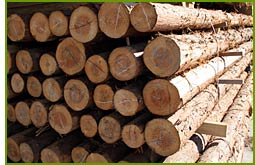Future Demand and Supply of Wood
29th October 2009

- To date nearly 1 out of 3 people in the world (1.7 billions) are living in countries and areas that have critically low coverage of forest. If the present deforestation continues the figure will be tripled to 4.6 billion people by 2025.
- The total forest areas have diminished by 50 percent since 1960.
- More than 90 percent of the original forests in West Africa are temporarily lost.
- In Africa, only 1 tree is planted for each 28th that is cut.
- 8 out of 10 people use less paper than what is estimated to be necessary needs for education and communication in the future.
- Countries like Japan, England and USA are today among the largest consumers of wood. In the future however, countries like China and India, with a population many times the size of the three above mentioned countries combined, will have an enormous increasing demand for wood.
Some figures for comparison:
In Japan every person consumes about 242 kilos wood per year, while the consumption in India is still only about 4 kilos a person a year.
- At the same time prognosis show that the area covered by forest in India will decrease by more than 30 percent per person the next 20 years. This, among other things, is a result of an increasing population of more than 300 million people during the same period.
- Today the forests in China are covering about 16 percent of the total land. The demand is however more than doubled. This implies shortage of about 270 million cubic meters of wood each year. The situation is worsening due to population growth and economic revolution taking place in China right now.
Because of the facts mentioned above the prices of tropical timber and harvestable products from the different trees will probably increase enormously within the next 20–30 years. In the diagram below you will find a comparison of supply and demand for tropical timber. The lines crossed in 2001 and it is supposed that the gap will increase in the years to come. This will of course have a large impact on the wood prices in the future.

|